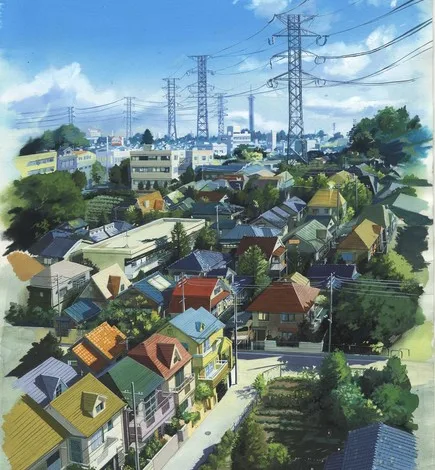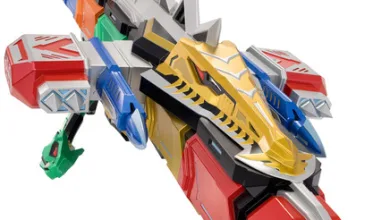Generative AI Used for Background Coloring in Anime – Interest

The discussion over generative AI has been raging for the past few years. Many of the issues surrounding the technology revolve around how it can be used to disrupt traditionally creative endeavors such as acting, art, and writing, among others. The Nihon Keizai Shimbun (Nikkei) paper reported on Thursday on how some anime studios (and manga services) are already using generative AI.
Nikkei’s “Japanese Anime Speeds Up Drawing With AI and Division of Labor to Rectify Long Working Hours” article focused on ways in which studios are using generative AI to reduce labor times with the increased demand of anime and related works. At first glance, one might think studios are replacing animators with generative AI programs, however, at least one studio says that it is using generative AI to help productions.
日本アニメ、AIと分業で作画サクサク 長時間労働是正へhttps://t.co/38nwp9RHre
— 日本経済新聞 電子版(日経電子版) (@nikkei) August 14, 2024
Japanese Anime Speeds Up Drawing With AI and Division of Labor to Rectify Long Working Hours
Nikkei’s article’s first example was K&K Design using generative AI for coloring backgrounds. Nikkei stated that the Nagoya-based company has people sketching the backgrounds, and then generative AI coloring in those sketches. The article further explained that K&K Design‘s Director Hiroshi Kawakami said (roughly translated), “We decided we needed to collaborate with AI to improve the working environment while maintaining the quality of production.” Nikkei’s reported that a process that can take a week to complete can be done in five minutes.
K&K Designs said it used generative AI for an animated sequence in the eighth episode of the live-action Trillion Game series in September 2023. K&K Designs posted on X (formerly Twitter) that they cooperated with the AI Anime project..
本日放送の TBS金曜ドラマ
#トリリオンゲーム 8話の
アニメ関係の美術制作に
tazikuさんと共に取り組んでいる#AIアニメプロジェクト にて
協力させていただきました!ポスター、絵コンテ、アニメーション、などなど、たくさん出てきました✨✨
(画像の一部は本編と異なる部分がございます。) pic.twitter.com/u6RplRB8z2
— K&Kデザイン (@KnKDesign) September 1, 2023
Today’s TBS Friday Drama
We worked with taziku-san on
the production for the animation in episode 8 of
Trillion Game.
We cooperated with the AI Anime Project!There were posters, storyboards, animation, and many more ✨✨
(Some of the images may differ from the actual episode.)
The Nikkei article also touched on generative AI in the sphere of manga production. A Tokyo-based digital manga production company called en-dolphin (pronounced like the English word endorphin) is developing a generative AI program (roughly translated), “that can reproduce illustrations by learning from manga artists’ past works.”
If the generative AI en-dolphin is developing is only used to support creators, the technology could speed up the drawing process for manga creators. At the same time, though, it could put many manga assistants out of work. However, if the generative AI is used to create new series based on the art of past works, questions of copyright regarding artistic styles could arise. As fun as it might be seeing a new work based on the style of Osamu Tezuka or Akira Toriyama, that work would lack the charm of either creator. The en-dolphin website does state (roughly translated):
It is a “custom-made” AI service that will not operate without the permission of the manga creator who holds the copyright, and the manga creator can control all of the learning results.
By thoroughly eliminating learning other than that of contracted manga artists and establishing a strict management system, we are offering a “safe and secure” service that protects the artists’ copyrights and the originality of their works.
En-dolphin’s website also gave examples of how its generative AI system would work using Machiko Satonaka, Yoshimi Kurata, and Dong-Hwa Kim’s art as a reference. With Satonaka and Kim, we see the conversion of an illustration from a rough sketch to final colored drawing. With Kurata, we see a manga page with completed paneling, but with rough character artwork, converted to a color page complete with backgrounds.
Nikkei’s article also covered the localization company Orange Inc. (no relation to the anime studio Orange) and its effort to release manga using AI for the base translation.
The article elucidates a couple of interesting points about generative AI. In some cases, the technology is useful in terms of increasing the production output. However, it still requires a human to oversee the final product. There’s also something a bit insidious about the article as it only views the issue from a capitalist lens — specifically, how much more labor can be extracted out of those in the anime industry for less time, and potentially less pay. But this is the Nikkei, a financial newspaper, we’re talking about. So, it’s to be expected. Nonetheless, we’ll have to watch how generative AI is used to change the workflow at studios.
Sources: Nihon Keizai Shimbun via Yaraon, Nihon Keizai Shimbun‘s X/Twitter account, K&K Designs’ X/Twitter account, en-dolphin’s website (link 2, link 3, link 4), Yoyogi Animation Academy Ikebukur’s X/Twitter account
insert_ip_tracking ibae ucp oate usmc, i
Source link
#Generative #Background #Coloring #Anime #Interest




